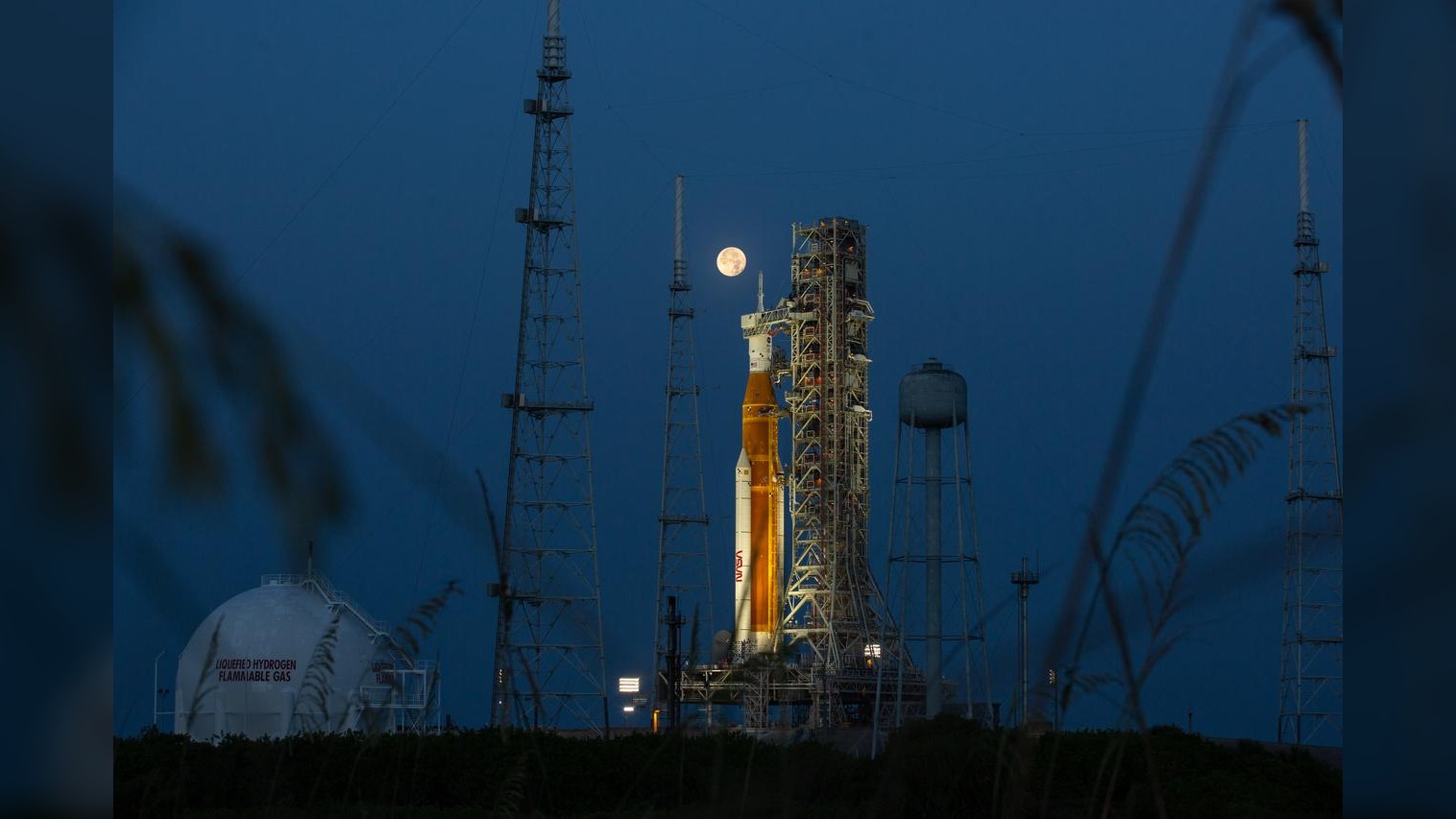NASA calls off Artemis 1 launch as Hurricane Ian threatens Florida
It will be the third scrub of the month

NASA has canceled yet another launch attempt of its "mega moon rocket" — this time due to a hurricane that’s heading for the launch site.
Hurricane Ian, which grew from a tropical storm today (Sept. 26) and is projected to continue strengthening before it hits Florida's gulf coast by Thursday (Sept. 29), caused NASA to delay its Artemis 1 mission for the third time in the last month. The rocket was scheduled for its latest attempted launch on Tuesday (Sept. 27).
Two previous launch attempts had been scrubbed due to a spate of technical issues, including a hydrogen leak and a suspected faulty temperature sensor inside one of the rocket's core stage engines. With the hurricane on the way, NASA executives decided to roll back the rocket to the safety of Kennedy Space Center's Vehicle Assembly Building — delaying its launch by another two weeks.
Related: Lightning strikes Artemis I mission's 'Mega Moon rocket' launch pad during tests
"Due to weather predictions related to Hurricane Ian, NASA teams will roll the Artemis I NASA SLS rocket and NASA Orion spacecraft back to the Vehicle Assembly Building at NASA Kennedy [Space Center]," NASA representatives wrote on Twitter on Sunday (Sept. 25).
The rocket’s rollback will preclude it from blasting off during the current launch window, which closes on Oct. 4. After that date, the next window will open from Oct. 17 to Oct. 31.
The giant Artemis 1 rocket — consisting of the six-person Orion capsule perched atop the 30-story Space Launch System (SLS) "mega moon rocket" — has been preparing to embark on the first of two test journeys that will pave the way for a human moon landing in 2026, marking humanity's return to the moon for the first time since 1972 and signaling NASA's intent to establish a long-term presence there. The rocket is the most powerful ever built by NASA.
Sign up for the Live Science daily newsletter now
Get the world’s most fascinating discoveries delivered straight to your inbox.
Orion is planned to make two fly-bys of the moon 62 miles (100 kilometers) above the lunar surface, zipping as far out as 40,000 miles (64,000 km) beyond the moon before returning to Earth 38 days after launch.
Stowed aboard Orion are three mannequins that NASA will use to test radiation and heat levels during the flight. A Snoopy soft toy is also along for the ride, floating around inside the capsule as a zero-gravity indicator.
The flight will be followed by the Artemis 2 and Artemis 3 missions in 2024 and 2025/2026 respectively. Artemis 2 will make the same journey as Artemis 1, but with a four-person human crew, and Artemis 3 will send the first woman and the first person of color to land on the moon's south pole.
Hurricane Ian has been gaining in strength since its formation in the southern Caribbean on Friday (Sept. 23). Forecasters projected that the storm will pass over western Cuba before reaching Florida by the middle of the week, at which time it could reach Category 4 intensity with wind speeds of up to 130 to 156 mile per hour (209 to 251 kilometers per hour), according to the National Hurricane Center.
Florida’s Gov. Ron DeSantis has declared a state of emergency for all 67 of Florida's counties, and has warned residents to take precautions as soon as possible.
"Make preparations now," DeSantis said at a news briefing on Sunday (Sept. 25). "I know a lot of people have been doing it throughout the state of Florida."
Originally published on Live Science.

Ben Turner is a U.K. based staff writer at Live Science. He covers physics and astronomy, among other topics like tech and climate change. He graduated from University College London with a degree in particle physics before training as a journalist. When he's not writing, Ben enjoys reading literature, playing the guitar and embarrassing himself with chess.









